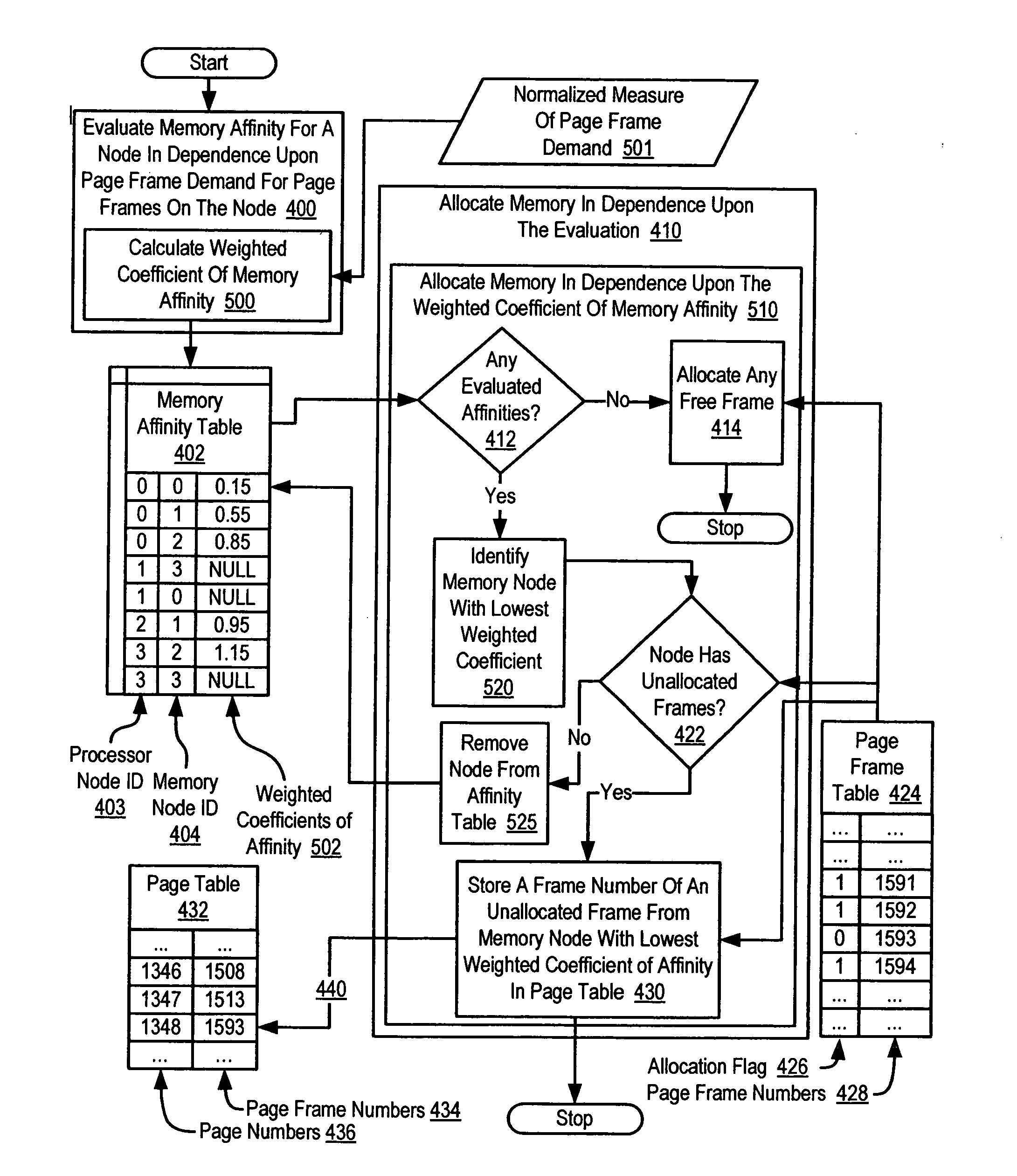Memory allocation in a multi-node computer
- Summary
- Abstract
- Description
- Claims
- Application Information
AI Technical Summary
Benefits of technology
Problems solved by technology
Method used
Image
Examples
Embodiment Construction
[0021] Exemplary methods, apparatus, and products for memory allocation in a multi-node computer according to embodiments of the present invention are described with reference to the accompanying drawings, beginning with FIG. 1. Memory allocation in a multi-node computer in accordance with the present invention is generally implemented with computers, that is, with automated computing machinery. For further explanation, therefore, FIG. 1 sets forth a block diagram of automated computing machinery comprising an exemplary computer (152) useful in memory allocation in a multi-node computer according to embodiments of the present invention. The computer (152) of FIG. 1 includes at least one node (202). A node is a computer hardware module containing one or more computer processors, a quantity of memory, or both processors and memory. In this specification, a node containing one or more processors is sometimes referred to as a ‘processor node,’ and a node containing memory is sometimes r...
PUM
 Login to View More
Login to View More Abstract
Description
Claims
Application Information
 Login to View More
Login to View More - R&D
- Intellectual Property
- Life Sciences
- Materials
- Tech Scout
- Unparalleled Data Quality
- Higher Quality Content
- 60% Fewer Hallucinations
Browse by: Latest US Patents, China's latest patents, Technical Efficacy Thesaurus, Application Domain, Technology Topic, Popular Technical Reports.
© 2025 PatSnap. All rights reserved.Legal|Privacy policy|Modern Slavery Act Transparency Statement|Sitemap|About US| Contact US: help@patsnap.com



